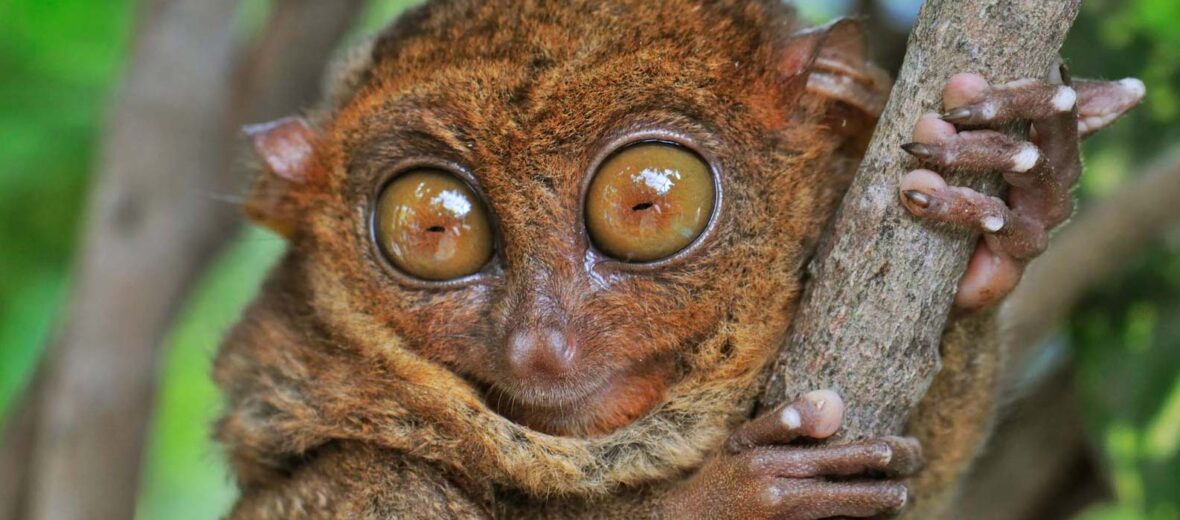
With huge eyes, literally the size of their brain, that seem to stare right through you, it’s the pygmy tarsier. They can only be found in the Southeast Asian island nations of Brunei, Malaysia, Indonesia, and the Philippines. These adorable little critters also have long fingers and toes and fur so soft it doesn’t even feel like you’re touching anything at all. Pygmy tarsiers are listed as Data Deficient with the IUCN, meaning that there is not enough information on their numbers or the stability therein to determine a status. The largest threat to these critters is habitat loss and degradation. Hunting and fires set by humans are also big threats. These issues, along with logging, are most likely going to continue to be practiced in the future. Finally transmigration and local clearance are other known threats.
First the Stats…
Scientific name: Tarsius pumilus
Weight: Up to 1.1 ounce
Length: Up to 6 inches, plus a 12 inch tail
Lifespan: Up to 20 years
Now on to the Facts!
1.) As you can tell by their massive eyes, the largest of any mammal in comparison to their head and even their brain, these critters are strictly nocturnal (active at night).
2.) They are also heavily arboreal (live their lives in trees).
3.) This species of primate are known as precocial (young are relatively mature and mobile from the moment of birth).
4.) Pygmy tarsiers can rotate their head 180°!
5.) Tarsiers are the only primates that are entirely carnivorous. They prey on insects, reptiles, amphibians, and even birds.
But wait, there’s more on the pygmy tarsier!
6.) These little pygmies are ambush predators. They have even been seen catching prey in mid flight by pouncing on their victims, with the use of their elongated hind limbs.
7.) Tarsiers get their namesake from the incredibly elongated tarsus bones in their feet. Their hind legs and feet, combined, are twice as long as their body!
Did you know…?
Being acrobatic comes natural to the pygmy tarsier as they can leap over 16 feet in a single jump!
8.) Different than most nocturnal animals, tarsiers do not have a light-reflecting area (tapetum lucidum) of the eye. They also have a fovea (a small depression in the retina of the eye where visual acuity is at its highest), which is unusual in nocturnal creatures.
9.) They are among the oldest primates on the planet, going back to around 40 million years! Fossil records show them once being at home all over the world, including North America and Europe.
10.) Their grip on tree branches and bushes is aided by the tips of their digits, that are expanded into disk-like adhesive pads.
But wait, there’s still more on the pygmy tarsier!
11.) The pygmy tarsier is monogamous (mates for life). Some groups, however, have demonstrated polygyny (one male mating with multiple females).
12.) Females are pregnant for around 6 months and give birth to a single infant.
13.) A male is called a buck, a female is called a doe, and a baby is called an infant.
14.) Feral cats, small carnivores, owls, large snakes, and large birds of prey all hunt these diminutive critters.
Now a Short Pygmy Tarsier Video!
Also, check out the Critter Science YouTube channel. Videos added frequently!
Want to suggest a critter for me to write about? Let me know here.



